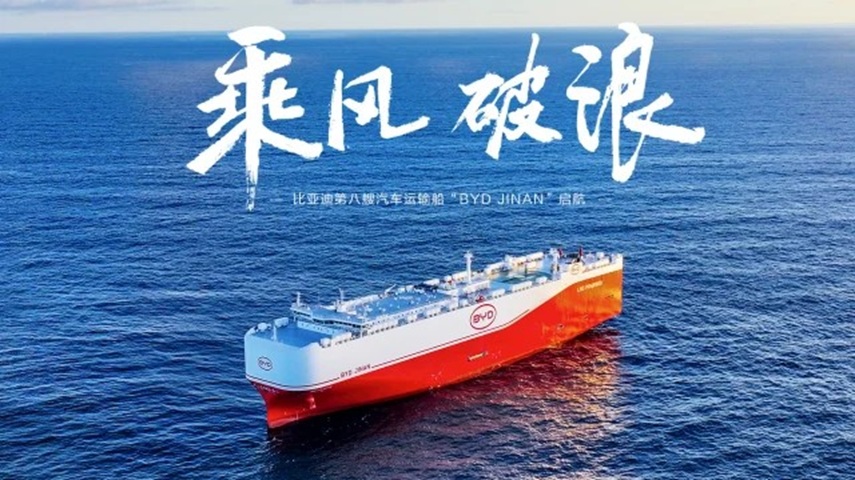BYD recently announced, as reported in Chinese media, that its 8th Ro-Ro (roll on-roll off car carrier) ship recently departed from the Xiaomo International Logistics Port in Shenzhen, bound for Singapore with over 6,000 vehicles on board. The energy-efficient ship and the expansion of BYD’s export capacity is newsworthy in and of itself. BYD’s cooperation with Shenzhen Port Group to develop green shipping corridors is also significant. However, within the context of Singapore, the shipment has massive implications for this relatively small market.
In 2024, BYD sold 6,191 vehicles in Singapore. That’s roughly the size of this one shipment. However, that made BYD the largest automaker in the country for the year — not just in EV sales, but in overall vehicle sales — overtaking Toyota.
In addition, BYD was already the top selling automaker in the first half of 2025, with 4,667 vehicles representing an 80.4% YoY increase, distancing itself from Toyota in second. Meanwhile, Tesla, once the top EV brand, declined to a few hundred vehicles. Between the new shipment and first half sales, BYD is looking at over 25% of the total Singapore market, even without including Q3 sales.
BYD has also recently been awarded contracts for autonomous buses, which are poised to expand its commercial vehicle presence. Within a relatively short period of time, BYD has moved into a dominant position in both personal and commercial vehicles in Singapore.
And BYD’s expansion is helped by policies that support electrification. Singapore no longer allows diesel cars and taxis to be registered. In addition, ICE vehicles are subjected to much higher taxes, which can multiply the purchase price. There may also be a rush to buy cars before some tax rebates expire. Newly registered fully electric cars and taxis currently receive a 45% Early Adopter rebate off the Additional Registration Fee (ARF), currently capped at $15,000 SGD ($11,600 USD), with that cap set to be cut in half at the start of next year. The Enhanced Vehicular Emission Scheme is also set to drop by $2,500 SGD from its current $25,000 ($19,300 USD) level. In addition, there are multiple commercial vehicle incentives. It should be noted that these are not payments, but rather reductions on very high taxes that are intended to reduce congestion on the small, densely populated island nation. By 2030, the incentives will have largely been phased out, to be replaced with a ban on ICE vehicles.
While the overall market may be small, BYD is positioned to lead in a country that is leading in electrification. Much like the relatively small country of Norway serves as an example to Europe, Singapore can serve as an example for the rest of Southeast Asia. By showing leadership, BYD and Singapore have the potential to accelerate electrification throughout the region.
CleanTechnica’s Comment Policy
Larry lives in Queens, NY, with his wife and cats. While he has spent much of his professional career leading global marketing efforts, his passions focus on clean technology and the automotive industry. He believes in Green Free Trade and the potential for the application of engineering talent to create solutions to the world’s most challenging problems.
Larry Evans has 26 posts and counting. See all posts by Larry Evans











